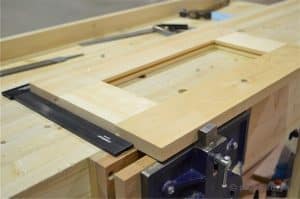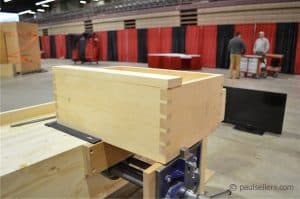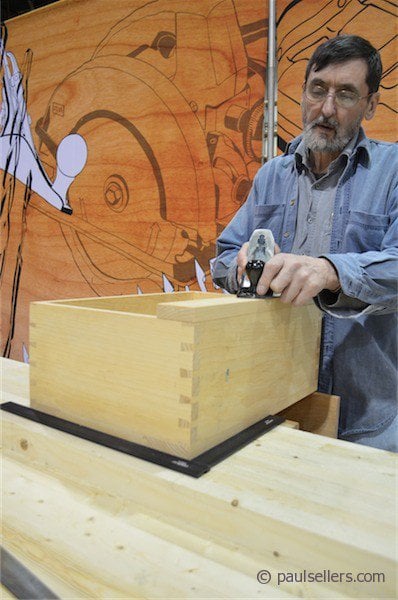Are dogs a man’s best friend?






Comments are closed.
You must enter certain information to submit the form on this page. We take the handling of personal information seriously and appreciate your trust in us. Our Privacy Policy sets out important information about us and how we use and protect your personal data and it also explains your legal rights in respect of it. Please click here to read it before you provide any information on this form.
I use a planing stop described by Ian Kirby. He attaches a slotted piece of timber to the leg of his bench with a wing nut and cuts a mortise in the benchtop through which the stop rises. You can adjust the stop to whatever thickness (height) you need. An alternative is to make an L-shapped appliance with thin material on one leg that rests on the benchtop and the other leg of the L in the vice. I’ve not tried making one of these yet, but it seems a really simple substitute that could be made easily in minutes that would serve for the veritas plaing stop you show perpendicular to the vice (for planing along the bench). With your bench design, I’ll bet you could put a thin bar clamp from the apron to the well, tilt the clamp so that it is almost on its side on the bench top, and then butt the work piece against the bar of the clamp. Rotate the clamp or or less for the thickness of the wood. This would be a planing stop for free. Alas, I’ve not built your bench yet to try it.
I really like Kirby’s planing stop and use it for many things although I’ve got mine mounted on the bench end away from the vise. It is so quick to pop it up and lean something against it to plane or even gentle chisel cuts like making knife walls. So far, I’ve felt safe doing that. I’ve let pieces rest against it while I pushed a gauge (a tool that still frustrates me as a beginner).
Here’s a link showing Kirby’s planing stop. Look at the very first picture. http://www.woodworkersjournal.com/Main/Articles/Skill_Builder_Ian_Kirbys_Arts_Crafts_Workbench_7211.aspx
Those are nice, especially with the sliding posts to conform to wherever your dog holes are! I use two wooden battens just like this on my portable Roy Underhill bench. I normally don’t need to secure the workpiece, I just plane into the battens or their corner.